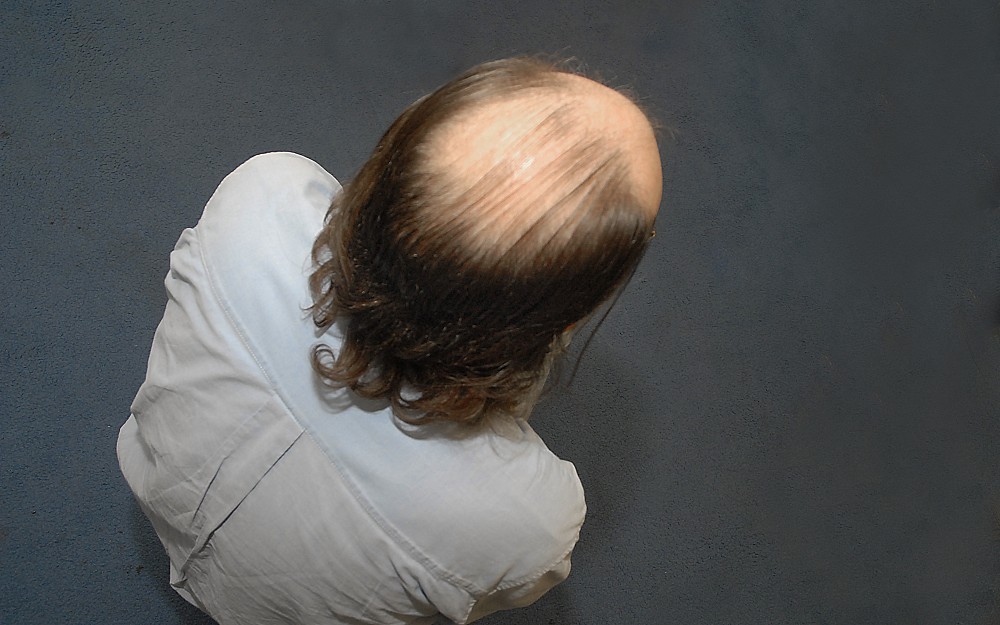
UC HEALTH LINE: Pattern Hair Loss Sometimes Treatable--But Also Inevitable
CincinnatiA mans chance of completely stopping hair loss is comparable to stopping a runaway truck without brakes: unlikely.
Pattern baldness, known medically at androgenic alopecia, is the most common form of hair loss in both men and women. The condition is caused by hereditary factors and circulating hormones known as androgens.
The same hormones that give boys facial hair during puberty will cause them to lose hair on their heads as men, says Diya Mutasim, MD, a dermatologist and chair of UCs dermatology department. We are genetically destined from birth to either lose or keep our hair as we age. Most treatments to prevent hair loss are simply delaying the inevitable.
Mutasim says hair loss is a natural part of the hair growth and replenishment cycle. The American Academy of Dermatology (AAD) says most people lose an average of 50 to 100 hairs a day.
Hair grows from follicles, which reside below the skins surface and are the only living part of the hair. Hormones allow healthy hair follicles to consistently grow for approximately three years, then the follicle sheds the hair and begins the process again. The AAD estimates that 90 percent of a persons hair is growing at any given time.
This process allows the scalp to consistently and continually grow hair, so you dont notice the hair turnover, says Mutasim.
If the hair follicle goes into a permanent resting phase, Mutasim explains, it will not grow new hair. This is when people start to notice baldness because the natural turnover in hair is not being replenished.
Although it is rare, pattern baldness can also affect women. Mutasim estimates one in four American women are living with pattern hair loss. He urges both men and women to exercise caution when regularly using chemical treatments on their hairincluding straighteners and permanent wavesas they may detrimentally impact hair follicle health and therefore hair growth.
In addition to genetics and hormones, illness, stress, and other factors can cause periods of more severe hair loss. The conditionknown as telogen effluviumcan be triggered by things that disrupt the hair growth cycle, including: post-delivery, low iron, thyroid disease, major surgery, chronic illness, high fever, severe flu or infection or birth control medication.
Mutasim says men who choose to treat hair loss need to realize they are making a long-term commitment.
Most men wont see results for at least three to four months of continuous treatment, he says. Even after that, as soon as treatment is discontinued hair growth will also stop and their newly replenished hairs will fall out.
For those who are willing to make the long-term commitment, he says there are two safe and relatively effective treatment options: Finasteride (pronounced fin-AST-er-ide, marketed as Propecia), a daily oral medication, and over-the-counter minoxidil (pronounced min-OX-ih-dill, marketed commonly as Rogaine), a spray or lotion applied to the scalp twice daily. Finasteride works by decreasing the amount of the active ingredient of androgen (DHT), which leads to increased hair regrowth and slower hair loss. It is only approved for use in men.
Success of treatment, however, depends on several factors:
- Age of hair loss onset: People who experience signs of hair loss at younger ages generally lose their hair faster and more completely.
- Timeframe between hair loss and decision to treat: After experiencing hair loss, the longer a person waits to try treatment the less likely it is to work. Medical treatment can only stimulate hair growth if the hair follicle is still alive.
- Where the hair loss occurs: Treatments are more effective for regrowing hair on the crown of a persons head, not the temples or forehead.
- Consistency of treatment: Medical treatments for hair loss are only effective if done consistently over the long term.
Its important for men to realize treating hair loss medically is only delaying the inevitable, adds Mutasim. But if they can afford the time and cost of treatments, it is a legitimate way to stimulate hair growth.
Finasteride costs about $2 a pill. Minoxidil costs about $10 to $15 per month. Neither is covered by insurance. Appointments can be made with a UC dermatologist by calling (513) 475-7630.
For more information on hair loss, visit www.netwellness.org, a collaborative health-information Web site staffed by Ohio physicians, nurses and allied health professionals.

Diya Mutasim, MD, is chairman of UC's dermatology department.
Tags
Related Stories
ChemoID test leads to better outcomes in platinum-resistant...
April 7, 2025
MSN and MSN UK highlighted results from a new Phase 3 trial published in the journal npj Precision Oncology that found a cancer stem cell test can accurately choose more effective treatments and lead to improved outcomes for patients with platinum-resistant ovarian cancer.
Study: Platform-predicted treatments improve outcomes for...
April 4, 2025
Results from a new Phase 3 trial published in the journal npj Precision Oncology found that an assay that includes an assessment of cancer stem cell sensitivity to chemotherapy can accurately decide more effective treatments and lead to increased outcomes for patients with platinum-resistant ovarian cancer.
Pediatrician celebrates 30th UC College of Medicine reunion with...
April 3, 2025
There’s a vital thread woven into the fabric of Chris Peltier’s life. It’s black and red, and it knits all things Bearcat together into a life that was transformed by the University of Cincinnati and the UC College of Medicine.
